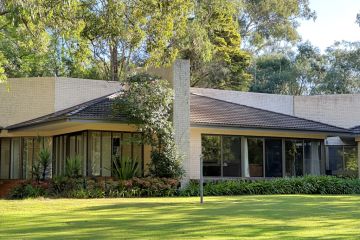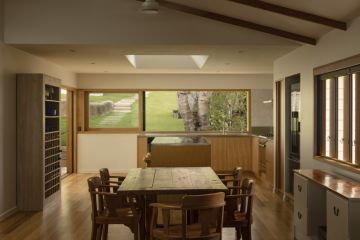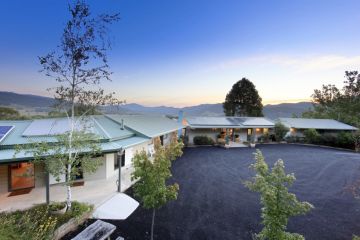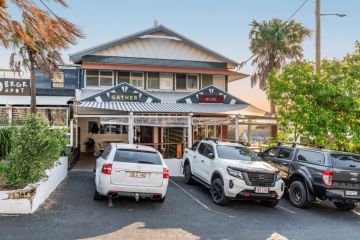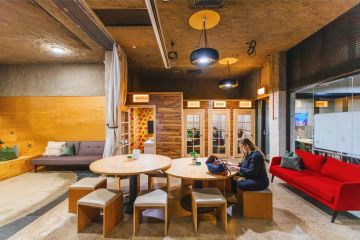Iconic houses that shaped Australia
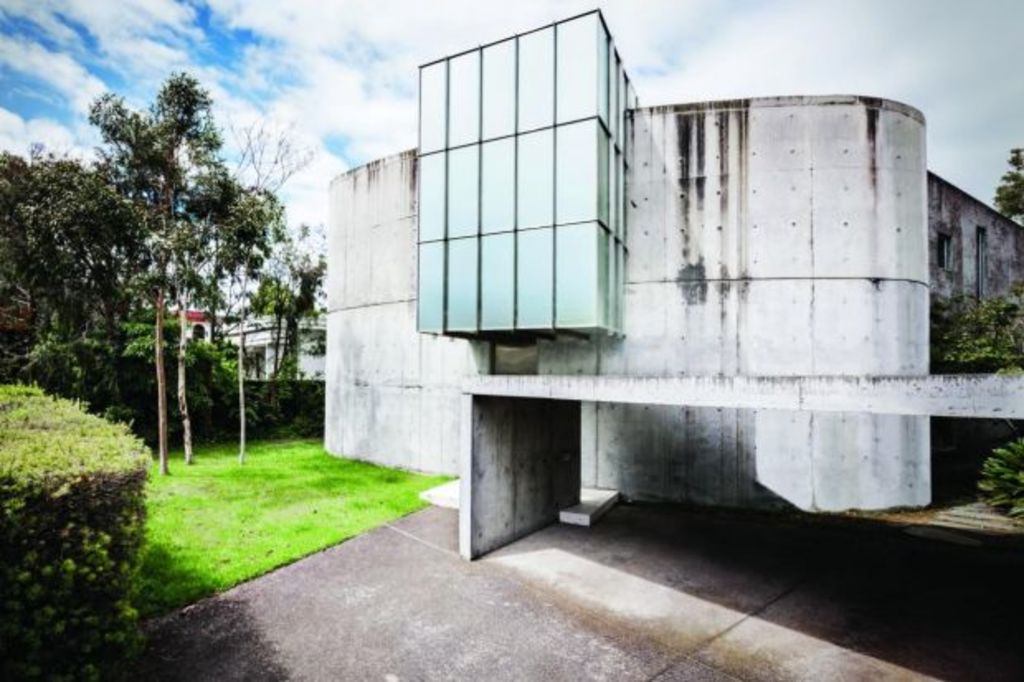
Australian architecture spans numerous design eras, with the majority of residential projects derivative of popular European styles.
Since the 1950s however, a more defined vision and character has emerged throughout southern Australia. Inspired largely by mid-century modern design and Australia’s climate and landscape, the following homes have contributed to the shaping of a unique Australian architectural identity.
1. Rose Seidler House (1950), New South Wales
Austrian-born architect Harry Seidler designed the Rose Seidler House upon moving to Australia in 1948. The Wahroonga home was originally designed for Seidler’s parents (and his name after his mother) who lived in the home from 1950 to 1967.
The glass-walled, open-plan, flat-roofed and elevated cube-like form is an expression of the Bauhaus principle, influenced by Seidler’s early training under Walter Gropius – founder of the revolutionary Bauhaus school of design.
The house demonstrates spatial design – a key characteristic of Seidler’s work – whereby the eye is drawn to what’s beyond each room, with no obstruction to users’ vision.
“As one of the original mid 20th century homes designed in Australia, it was described as futuristic and ultra modern,” says Dr Matthew Bird, architect and senior lecturer at Monash University.
“This floating home, with a functionalist sprit, played a significant role in influencing a new trend of domestic design.”
The house, grounds and contents have all been sympathetically restored to their original 50s glory, with the bold colour palette and open-plan layout fixtures maintained.
“It was the first significant project for Harry Seidler, who went on to produce a number of classic architectural works,” says Adrian Light, architect and director of ONE20 Group.
Other Seidler designs include Blues Point Tower (1962) – a 25-storey apartment building and Australia’s tallest residential building until 1970.
The attractiveness of the building and the consistency with its surrounds has long been debated. Despite this, Seidler stood by it as one of his “best buildings” stating in a 2002 Fairfax interview, “Anybody who can’t see anything in it ought to go back to school.”
Blues Point Tower was added to the North Sydney Council’s local heritage register in 1993.


Rose Seidler House. Photos: Sydney Living Museums
2. Walsh Street House (1958), Victoria
The Walsh Street House (also known as Boyd House II) is one of only a handful of Australian homes to be recognised internationally.
The Walsh Street House is arguably architect Robin Boyd’s most well-known work, showcasing many of the modernist ideals and sympathetic site design that characterise his projects.
“The houses designed by Robin Boyd including the Walsh Street House in South Yarra brought modern design to Melbourne which previously exalted an Australian architectural tradition that was lost in a sea of brick veneer,” Light says.
From the street, the home is almost entirely hidden, with what’s visible shaded by a large Monterey Pine Tree. This was an intentional part of Boyd’s design in order to preserve the tree and to create views towards an internal courtyard.
The Robin Boyd Foundation – an organisation that works to continue the work and spirit of the late architect – purchased the home from Boyd’s widow Patricia in 2005.
“It was quite radical in its day as it changed the perception of what a house is about,” says Tony Lee, architect and the Robin Boyd Foundation executive director.
It’s estimated that of the 200 of Boyd’s designs that were built across Melbourne, about 150 are still standing today.
“Robin was very aware of what at the time was a strong sense in the community of the need to define or establish an Australian character or identity,” Lee says.
“As an architect, Robin was very involved and conscious of one – trying to design in a way that created an Australian style of architecture, but more so, and probably more importantly, designing in a way that responded to our landscape, our climate, our light and the way we as people see ourselves living.”
The connection of Australian homes to their site can be largely attributed to Boyd’s influence.
“Our love of the view, whether coast, mountain or suburban rooftops plays a significant role in our homes design and orientation. We love to blur formal living in favour of relaxed living – spaces that extend from indoors to out,” Dr Bird says.



Walsh Street House. Photos: Slingard and Sydney Living Museums
3. Heide I (1870) and II (1963), Victoria
Heide I and II are the former homes of art benefactors John and Sunday Reed located on the site of Melbourne’s Heide Museum of Modern Art.
Since the couple purchased the site in 1934, the original farmhouse known as Heide I became a gathering place for the ‘Heide Circle’ made up of painters including Sidney Nolan and Albert Tucker.
“John and Sunday Reed were early Australian adopters of modernism in Australian art and design. Their house at Heide was a significant hub for avant-garde ideas and conversation in the 1930s and 40s,” Light says.
Heide I underwent various renovations in a French provincial style in 1934–35, 1954 and 1980 and was restored in 2001 and in 2010.
Between 1964 and 1967, the Reeds built a new residence, Heide II. Designed by Melbourne architect David McGlashan of McGlashan Everist, Heide II was intended as ‘a gallery to be lived in’. The house responds to its landscape, with a masterful balance of space and the natural light required for a gallery.
In 1980, the Reeds sold Heide II along with most of the adjoining property and significant works from their art collection to the Victorian state government.
They died shortly after in December 1981, just 10 days apart, and a month after the Heide II was opened to the public.



Heide II. Photo: Christine Francis and Kinfolk Magazine
4. Chadwick House (1904), Victoria
Architect Harold Desbrowe-Annear designed the Chadwick House located Eaglemont in 1904.
The house is one of three properties built on land purchased by Desbrowe-Annear’s father-in-law.
All three homes were designed in the ‘Arts and Crafts’ style – characterised by the integration of art into everyday life through craftsmanship – and are strategically positioned for optimum vista, ventilation, sunshine and atmosphere.
“This home is the finest residential example of the Arts and Crafts movement in Australia. This house and movement influenced many new homes of that era with a focus on decorative and handcrafted materials,” Dr Bird says.
Featuring many of the elements that characterise this architectural style – extensive timber panelling, built-in furniture and ceiling beams – the Chadwick House is significant for introducing the open-plan form into Australian domestic architecture.
“At the time an innovative open floor plan was employed that today is a standard approach in Australian homes,” Dr Bird says.
Architect Peter Crone purchased the Chadwick House in 1988 and spent 10 years restoring the house to its former glory in accordance with principles of the Burra Charter, whereby new work is subtly identified from the original.


Chadwick House. Photos: via Domain
5. Gottlieb House (1994), Victoria
The Gottlieb House is unassuming from the street, but inside lays a masterful design connected to light and nature.
Designed and built between 1990 and 1994, the home was their first big budget domestic design of Roger Wood and Randal Marsh of Wood Marsh Architecture.
Being built on the cusp of the recession and with few jobs to go round for architects and builders, the house demonstrates careful attention to detail.
The result is an entirely bespoke project, with all the furniture also designed by Wood Marsh.
“This magnificent family home appears from the street as a bunker with no windows, concrete walls and an armored seemingly floating metallic-like façade,” Dr Bird says.
“This home provides an interior experience of robust materials and large entertaining spaces.”
Located on a typical suburban street in Melbourne’s Caulfield, the house is distinctly modern, featuring robust materials, a theatrical atmosphere and geometric forms that define the Wood Marsh portfolio.
The Gottlieb House won the 1994 Victorian Residential Architecture Award.


Gottlieb House. Photo: Sydney Living Museums
6. The Roy Grounds House (1953), Victoria
Architect Sir Roy Grounds designed by the Roy Grounds House (also known as the Hill Street House or the Grounds House and Flats) as his family home in the early 1950s.
The main residence is part of a wider project that includes four investment units to the rear.
The Toorak home is known for its perfect square plan with integrated circular courtyard.
The single-storey home with its use of windows and seemingly hovering roof is believed to be a prototype for the National Gallery of Victoria that Grounds designed 10 years later.
Asian influences are noted through the design, from the positioning of the rooms towards an internal courtyard, bamboo foliage, formality and ‘politeness’ that was unusual for the 1950s.
Considered to be one of Australia’s most renowned works of modernist domestic architecture, the house represents Grounds’ experimental architectural style and unique vision of geometry.
The house was the winner of the 1954 Victorian Architecture Medal.


Roy Grounds House. Photo: Wikiwand and Australian Modernist Landscapes
We recommend
We thought you might like
States
Capital Cities
Capital Cities - Rentals
Popular Areas
Allhomes
More
